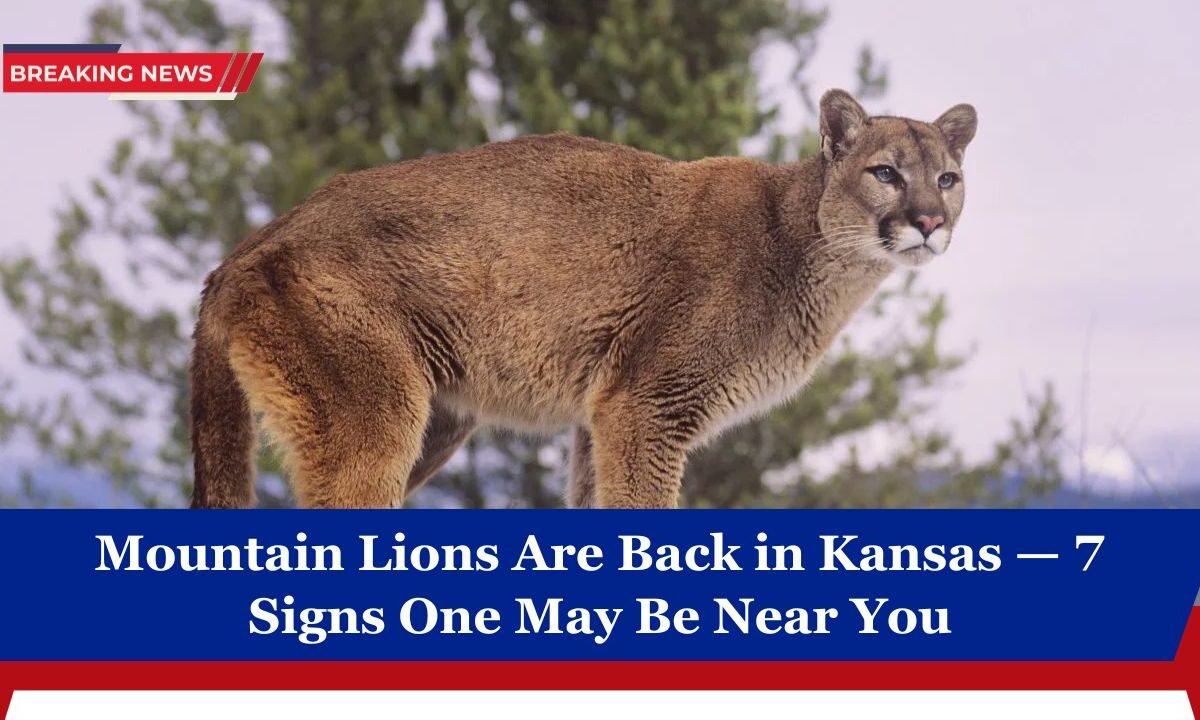When you think of Kansas, images of open plains and farmlands come to mind—not mountain lions. But in recent years, these big cats have made an incredible return to the Sunflower State.
Since 2007, there have been 117 confirmed sightings, with 65 occurring since 2023, according to wildlife officials.
These numbers indicate that mountain lions are quietly reestablishing their presence across parts of Kansas after more than a century of near absence.
Why Mountain Lions Are Returning
Historically, mountain lions—also known as cougars or pumas—roamed freely across North America, including Kansas. However, by the early 1900s, they were largely eradicated due to habitat loss and hunting.
Over time, as populations in neighboring states such as Colorado, South Dakota, and Nebraska have grown, younger lions have begun dispersing eastward in search of new territory.
Kansas offers vast stretches of woodlands, river valleys, and deer populations, creating the ideal conditions for these solitary hunters.
While most sightings still involve transient males passing through, evidence suggests that permanent populations could develop in the near future.
7 Signs That a Mountain Lion May Be Nearby
Knowing the signs of a mountain lion’s presence can help residents stay alert and report accurate information.
| Sign | What to Look For | What It Means |
|---|---|---|
| 1. Distinctive Tracks | Large paw prints, about 3.5–4.5 inches wide, with three lobes at the base of the pad and no claw marks | Indicates a big cat rather than a coyote or dog |
| 2. Scat / Droppings | Cylindrical droppings, often segmented and containing fur or bone fragments | Suggests a predator’s recent meal in the area |
| 3. Prey Remains | Partially eaten deer or livestock carcasses covered with leaves or dirt | Mountain lions often hide their prey for later feeding |
| 4. Scrape Marks | Mounds of dirt or leaves with claw marks and urine scent | Territorial marking behavior |
| 5. Trail Camera Images | Clear footage showing a long tail and muscular frame | The most reliable confirmation of presence |
| 6. Nocturnal Sounds or Sightings | Deep growls or fleeting sightings during dawn or dusk | Mountain lions are active mainly at night |
| 7. Repeated Activity in One Area | Multiple reports or tracks found over time | May indicate a lion passing through regularly or marking territory |
Safety Tips and What to Do
If you suspect a mountain lion is nearby:
- Do not approach any suspected lion tracks, carcasses, or dens.
- Keep pets indoors at night and secure livestock.
- Report sightings to wildlife officials immediately.
- If encountered, face the animal, make yourself look larger, speak firmly, and back away slowly—never run.
Mountain lions are elusive and generally avoid humans, but awareness is the key to safety.
The return of mountain lions to Kansas is a fascinating sign of nature’s resilience. With 117 total confirmed sightings and over 60 in the past two years, their quiet comeback proves these predators can adapt even in landscapes once considered unsuitable.
By recognizing the tracks, scat, and other clues, Kansans can better understand and coexist with these magnificent creatures while ensuring both human and wildlife safety.




